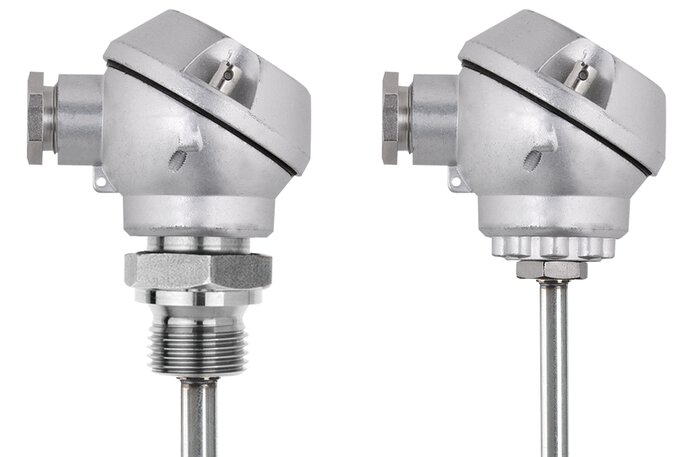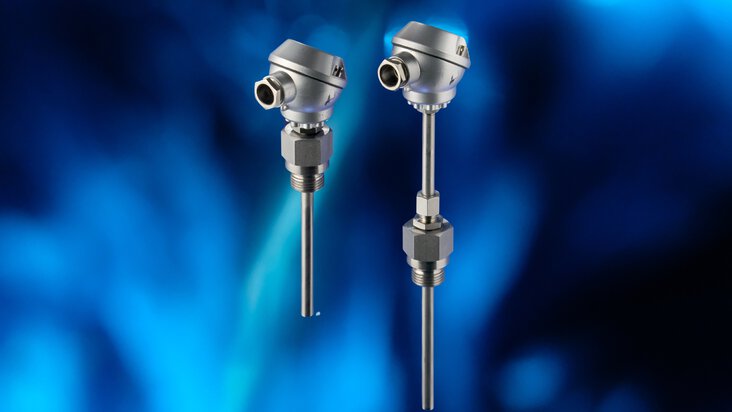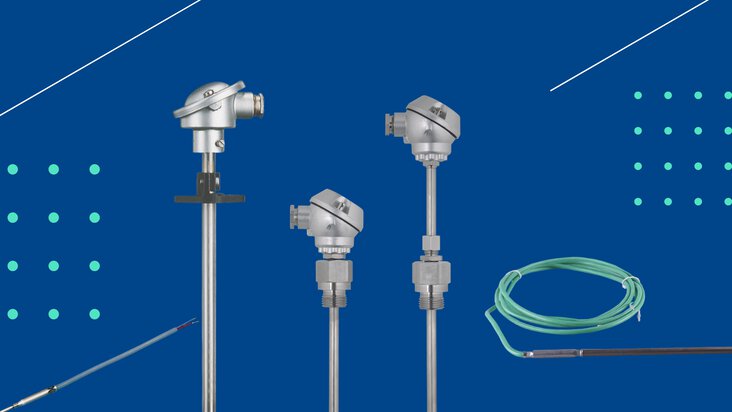

Dispelling myths: Why doesn't the Pt100 thermocouple exist?
Have you ever used the term 'Pt100 thermocouple' when searching for the perfect temperature measurement sensor? If so, you are not alone, we receive many such queries. In this article, we want to explain why the famous Pt100 thermocouple and Pt1000 thermocouple ... do not exist. Understanding this difference will help you to buy the right measuring device for your application and get efficient and accurate temperature measurements. Fear not! We will explain it in a simple and understandable way.
Is a Pt100 a thermocouple?
The use of the term 'Pt100 thermocouple' is due to the misconception that Pt100 is a type of thermocouple. In fact, they are two different types of temperature sensor, with different characteristics and applications. The Pt100, along with the Pt500 and Pt1000, belongs to the group of resistance temperature sensors. Their operating principle is based on the change in resistance of the material (in this case platinum) as a function of temperature.
Thermocouples are a term for temperature sensors (such as the K-type, J-type or L-type thermocouple) constructed from two legs made of different metals. These temperature sensors work on the principle of the Seebeck effect, that is, measuring the voltage generated at the junction of the aforementioned thermocouple wires and converting it into a temperature value.
Want to know more? The operation of both types of temperature measurement sensors is explained in more detail in the following paragraphs, read on!

A Pt100 temperature sensor and a thermocouple are two different temperature measuring devices
What is a Pt100 temperature sensor?
A Pt100 temperature sensor is a type of resistance temperature detector (RTD) that is constructed from pure platinum and has a resistance of 100 Ohms at 0 degrees Celsius. 'Pt' stands for platinum and '100' stands for resistance in Ohms.
The principle of the Pt100 is to exploit the properties of metals that change their electrical resistance as a function of temperature. In the case of platinum, this change is linear and very well defined, allowing precise temperature measurement.
Resistive Pt100 temperature sensors are valued for their accuracy, stability and resistance to a variety of environmental conditions, making them a popular choice for many industrial, scientific and commercial applications.

Resistance temperature sensor type Pt100 (product no. 902030)
What is a thermocouple?
A thermocouple is a type of temperature sensor that works on the basis of the thermoelectric effect, also known as the Seebeck effect. It is made of two different metals that are connected together at one end. When this connected end, called the hot junction, is heated, a voltage is generated. It is proportional to the temperature difference between the hot junction and the other end, called the cold junction.
It is this voltage that is measured and converted into a temperature reading. Thermocouples are widely used because of their resistance to extreme conditions, long life and ability to measure over a very wide temperature range.

Thermocouples and resistance temperature sensors, e.g. Pt100, are measuring inserts that can be housed in similar enclosures

The sheathed thermocouple is distinguished by its small size and bendability
Thermocouple versus Pt100 - similarities and differences
Resistance temperature detectors (RTDs), such as Pt100, and thermocouples are two commonly used types of temperature sensor. Although both are used to measure temperature, their design, operating principle, temperature range, accuracy and application are different.
The main difference between resistive temperature sensors and thermocouples is the range of temperatures measured. In the case of Pt100, this is usually max. 550-600°C. As most industrial applications work in the temperature range up to 200°C, a resistance temperature sensor is a common choice.
Thermocouples can operate at higher temperatures, typically 800-1200°C to even over 2000°C. As such, they will perform well in high-temperature applications in furnaces, vats or during the quenching process, among others.
In summary, the main similarities and differences between these temperature sensors are:
Thermocouple versus RTD - similarities:
- Purpose: Both technologies are used to measure temperature.
- Applications: Both resistance temperature sensors and thermocouples are used in a wide variety of industries such as chemicals, food, pharmaceuticals, energy and others.
Thermocouple vs RTD - differences:
- Operating principle: An RTD temperature sensor uses the change in resistance of a material (such as platinum) with temperature, while thermocouples use the thermoelectric effect, generating a voltage proportional to the temperature difference between two different metals.
- Temperature range: Thermocouples can measure over a wider temperature range (-270 to 2,300 degrees Celsius) compared to RTDs (-200 to 600 degrees Celsius).
- Accuracy and stability: Resistive temperature sensors such as the Pt100 are known for their exceptional accuracy and stability, making them an ideal choice for applications requiring precise measurements. Thermocouples are less accurate, but can measure temperature over a wider range and are more resistant to extreme conditions.

Comparison of advantages and disadvantages of resistance temperature sensors and thermocouples
Thermocouple or Pt100?
The choice between RTD and thermocouple depends on the requirements of the specific application, such as required accuracy, temperature range, environmental conditions, cost and sensor size. Need help with your choice? Contact JUMO experts or use our FAQs about PT100 and thermocouples.
Our product range includes wired and wireless sensors, sheathed sensors, head sensors and various types of thermocouples. Check it out!

The main difference between thermocouples and Pt100 is the permissible operating temperature. In the case of thermocouples, it is as high as 2000°C
Pt100 thermocouple - summary
After reading this article, you surely already understand why the term 'Pt100 thermocouple' is incorrect. Just as a reminder and to sort out your knowledge - the term combines two different types of temperature sensors that have their own unique characteristics and applications.
Don't worry if you've used this phrase - you don't have to be an expert in every field and familiar with technical terminology. Tell us the temperature you want to measure and other characteristics of your application. and we will help you select the right device, be it a thermocouple or a resistance temperature sensor like a Pt100.
At JUMO, no one will judge you - we are here to help you through the selection process, regardless of your technical experience! Contact us today and let's start working together to find the perfect temperature measurement solution for your application.
- ${title}${badge}

